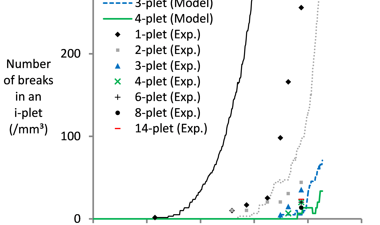Official announcement of the second version of benchmarking exercise for longitudinal strength models of UD composites

Official announcement of the second version of benchmarking exercise for longitudinal strength models of UD composites
The second version of the benchmarking exercise has now opened. We welcome participation from groups all over the world to contribute modelling predictions to this exercise.
Five years ago, we felt the need for an in-depth investigation of available strength models for unidirectional composites. Many good models have been developed, but there is currently no successful way of comparing them to each other. We therefore set up the first benchmarking exercise on longitudinal tensile strength models for unidirectional composites, jointly organised by KU Leuven, Imperial College London, Mines ParisTech and the University of Southampton. This exercise led to significant new insights in the benefits and drawbacks of the three models that participated, and how their assumptions influence the predictions. We also identified key areas for improvement in the experiments and models. These results are currently in submission, and will hopefully be published soon. You can already find a sneak preview of the results in our ICCM21 paper, downloadable from https://tinyurl.com/benchmpaper.
After this first exercise, the four partners decided to apply for funding to continue collaborations in this field. This resulted in the start of the Marie Skłodowska-Curie European Training Network FiBreMoD in October 2016. As part of this project, we will be organising a second version of our international benchmarking exercise. Compared to the first exercise, we are hoping to engage a wider group of researchers in the exercise, and to improve upon several of the experimental drawbacks. The goals of the second exercise are:
- To establish benefits and drawbacks of the different approaches.
- To establish gaps in literature and aspects that should be improved in the future.
- To provide a platform for researchers in this field to exchange thoughts and concerns.
This will be achieved by comparing the models against each other, but also against synchrotron radiation computed tomography experiments. The comparisons will therefore not just be based on failure strain or strength predictions, but also on the development of fibre breaks and clusters of fibre breaks.
We would therefore like to invite you to join this international benchmarking exercise. The expected timeline for this exercise is as follows:
- February-March 2018: Inviting participants
- May-June 2018: Sending out the initial instructions for participants, thereby giving all participants the opportunity to provide feedback or request additional information
- September 2018: Sending out the final version of the instructions
- January 2019: Submitting modelling results
- March 2019: Meeting to discuss the results
- April-July 2019: Preparing results for publication
If you are interested, then please confirm this via email to Yentl Swolfs (yentl.swolfs@kuleuven.be) by the 7th of March 2018. We also look forward to receiving any questions, remarks or concerns.
The FiBreMoD consortium


